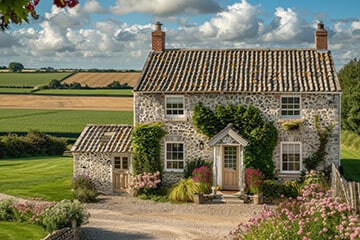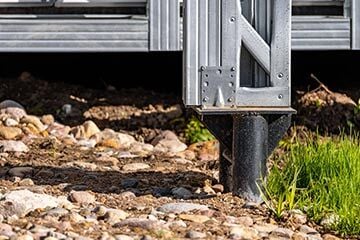The paperwork's been signed, you've got the keys and the celebratory social media pic's gone up.
But before you start settling in and arranging the furniture - have you sorted your home insurance?
Come on - let's get it ticked off the list.

What is home insurance for first time buyers?
It's a type of insurance that protects your home if something goes wrong - like damage from a storm, or stolen belongings.
There's different types of home insurance, and plenty of people tailor theirs to fit their home and lifestyle. If you're not sure what you need, no worries - we'll walk you through it.
What insurance do I need when buying a house?
Most mortgage providers will want you to have buildings insurance in place before you complete as a condition of the loan - so it's not really optional.
Plenty of people also add contents insurance at the same time, so the stuff inside the house is covered too. One combined policy usually does the trick.
These 2 are the bread and butter of first time buyer home insurance. Get them sorted, and you'll be in a good spot if something goes wrong later on.
Let's break down what each one covers and how to figure out how much you might need:
Buildings insurance
What it covers: The bricks, mortar, roof - plus all your fitted bits like kitchens, bathrooms, windows and guttering.
Why it's vital: Most mortgage lenders need you to have this. And if something major happens - like a fire, flood or vandalism - this part of your insurance is what helps you put things right without a huge bill.
You'll need to be insured for the rebuild cost of your home - not the market value. That's how much it would cost to rebuild the property from scratch, using similar materials and labour.
The market value is often higher, because it also reflects things like location, demand and the land your home sits on. If you use that, you could end up overpaying for your insurance.
Contents insurance
What it covers: All your stuff inside - sofas, tech, clothes, pots, pans and even carpets.
Why it matters: Your belongings are what turn a house into a home. If they're stolen or damaged, contents insurance helps you replace them without footing the full bill yourself.
To work out how much cover you'll need, add up the cost of replacing everything as new. It's often more than people expect, so it's worth going room by room to get a realistic estimate.
Does it matter what type of first home I'm buying?
Not really. Whether you're buying and insuring a new build, a Victorian terrace or a city flat, there'll be options to suit.
What matters most is making sure your policy fits the property you're buying - and covers the things you care about, from the roof tiles to the sofa cushions.
Do I need any additional cover?
That depends on how much you want covered. A standard home insurance policy usually protects against fire, storm damage and theft - but it won't cover everything.
You might want to think about extra cover for:
- Accidental damage - like smashed TVs, dropped laptops, or a paint tin kicked over in the hallway.
- Pet-related mayhem - chewed cables or scratched furniture often aren't covered unless you add it on.
- Personal belongings away from home - phones, laptops, jewellery and other things you take out and about.
- Alternative accommodation - if something happens and your home becomes unliveable.
- Got jewellery, designer gear or gadgets? Your standard policy might not cover them in full. If they're worth a lot, you might need specialist high value item cover to make sure they're properly protected.
Did you know? Some insurers include these extras as standard, while others charge to add them on. It's worth seeing what's bundled in before you pay more than you need to.
At what point should I buy home insurance?
As soon as you've got your completion date, it'll be time to get your policy lined up.
Remember - most mortgage lenders will want buildings insurance in place from the day you legally become the owner - not the day you move in.
That way you're covered from the moment it's yours, even if all you've moved in so far is a kettle and a roll of loo paper.
Do new builds need buildings insurance?
Yes - even brand new homes need cover.
New builds often come with a structural warranty, but that usually only covers specific defects - not things like fire, flooding or storm damage. That's where building insurance comes in.
And since your lender will still expect that insurance in place at completion, a brand new home doesn't get you out of it. It's still important to have the right cover from the start.
Tips for insuring your first home
- Don't just pick the cheapest policy. Look at what cover's actually included - the most affordable policy isn't always the best deal.
- Know what's not covered. Some policies skip things like accidental damage or personal items outside the home. It's worth a check before you buy.
- Double-check your excess. A higher excess can mean lower premiums but more to pay out if you need to claim. Make sure it's a realistic amount.
- Review it each year. Things change. Set a reminder to check if you need to update or switch your policy when it's time to renew.
- Be clear on what you're insuring. Just the building? Or your belongings too? Make sure your policy matches what you actually want to cover.
Still house hunting? Our deposit saving guide breaks down how to build up your deposit. Take a look at our house viewing tips to cover the things worth checking before you fall in love with a place. We'll still be here when you're ready to sort the insurance bit.







